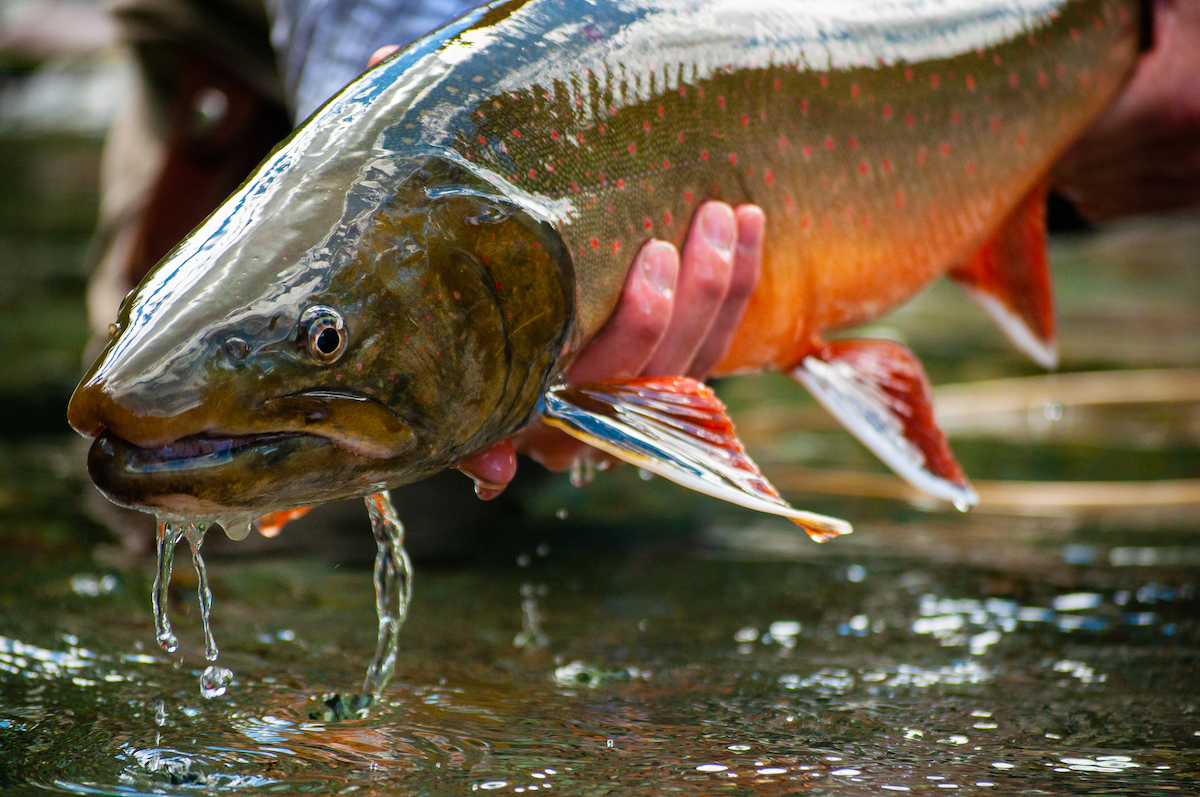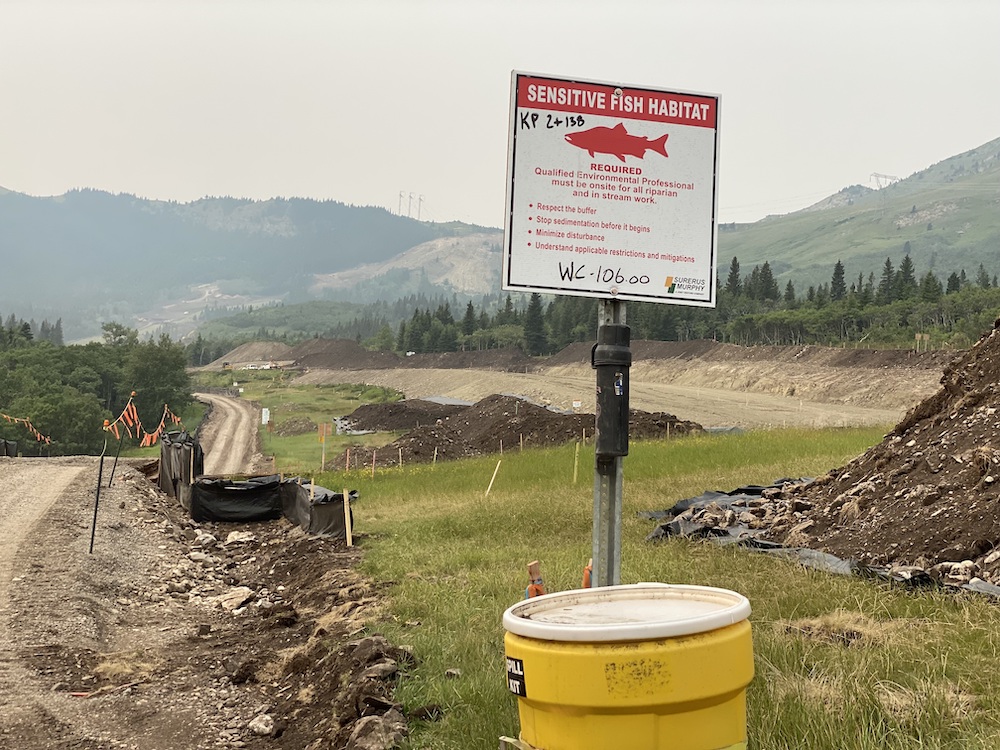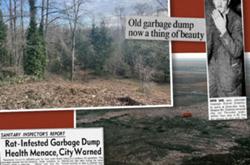Two Alberta-based environmental consultants say they plan to take legal action against the federal government after it authorized pipeline construction in habitat protected by Canada’s Species at Risk Act.
In an authorization letter dated earlier this year, Fisheries and Oceans Canada, also known as DFO, granted permission to TC Energy subsidiary Nova Gas Transmission Ltd. to carry out work that is “likely to kill” two SARA-listed threatened trout species and destroy its critical habitat in southwest Alberta.
The regulator doesn’t have that authority, the independent consultants say.
“We believe DFO is breaking the law to issue the permit,” said Mike Sawyer, who lives not far from where the construction is underway, roughly 200 kilometres south of Calgary.
“It makes a mockery of the Species at Risk Act. You’ve got these streams that are designated as critical habitat, and you’re not allowed to destroy them or destroy the fish, and yet they give a company like TC Energy a permit.”
The dispute comes down to interpretation of a section in the Species at Risk Act that DFO says gives it authority to permit work in areas otherwise covered by the federal species protections. TC Energy told The Tyee that it is working closely with environmental consultants and complying with government regulations.
Both Sawyer and aquatic ecologist David Mayhood say their issue is not with the company but with the federal regulator.
“If the government is going to overrule the provisions of the act that protects endangered species on a whim, it means that the endangered species legislation that we have is meaningless,” Sawyer said. “Whether we talk about fish or caribou or whatever, the reoccurring problem is that it sounds like we have nice, effective endangered species legislation in the Species at Risk Act, but in fact we don’t.”
On July 14, when Sawyer and Mayhood visited several pipeline construction sites near Lundbreck, Alberta, after being alerted to the work by a local resident, they saw critical habitat they say should be protected “absolutely getting hammered,” according to Sawyer.
The pair described construction taking place near or through multiple sites signed as sensitive fish, bird and amphibian habitat. Riverbanks were stripped of vegetation up to 30 metres on either side and they say inadequate erosion and sediment-control measures were in place, putting at risk threatened trout eggs incubating in the riverbed.
“If we had a heavy rainfall event,” Sawyer said, “you’re going to get massive sedimentation into those streams.”
The federal government approved the project in November. Nova Gas Transmission’s West Path Delivery 2023 project intends to add 40 kilometres of pipeline to an existing 25,000-kilometre network that ships gas across Canada and the U.S.
It is expected to be operational this fall, according to the Canada Energy Regulator.
The expansion is divided into three separate sections between Millarville and Lundbreck in southwest Alberta. The southernmost stretch, which is seven kilometres long, skirts the Rock Creek drainage, which feeds the Crowsnest River and provides critical habitat for westslope cutthroat trout, listed as “threatened” under the federal Species at Risk Act.
It’s an area with a rare population of westslope cutthroat trout that hasn’t hybridized with rainbow trout because of a natural barrier in the river, Sawyer said. The federal government lists Rock Creek as critical habitat in its recovery strategy.
The project also crosses habitat for SARA-protected bull trout.
Installing the 48-inch pipe will involve trenching through 10 watercourses, according to DFO’s authorization letter. Activities noted in the authorization that are “likely to result in the death of fish” and destroy critical habitat include diverting stream flows, drying out creek beds and relocating fish.
The Species at Risk Act forbids anyone to “kill, harm, harass, capture or take” any species listed as extirpated, endangered or threatened, and prohibits damage to the “residence” of a listed species, such as spawning grounds.

Following their site visit, Sawyer and Mayhood filed complaints with DFO and the Canada Energy Regulator. They also wrote letters to federal Fisheries Minister Joyce Murray and Minister of Environment Steven Guilbeault.
In a July 17 response to Mayhood, DFO said that it is authorized to allow the work under Section 73 of the Species at Risk Act, which says, in part, that the minister may allow “an activity affecting a listed wildlife species, any part of its critical habitat or the residences of its individuals.”
Mayhood argues that’s not true. “Ministers commonly have wide discretion, but not this much,” he said.
He pointed to the second part of Section 73, which states that the activity can occur under certain circumstances, such as scientific research for species conservation or other direct benefits to their recovery, or if “affecting the species is incidental to the carrying out of the activity.”
Mayhood added that the regulator is required to post an explanation of its decision to the Species at Risk Act’s public registry. None could be found and no permits have been posted for the current year, he said.
DFO also told Mayhood that it is reviewing the project’s erosion and sediment control plans and comparing them to the photos he provided. It added that a site visit is planned “in the near future” to ensure compliance.
In response to The Tyee’s questions, the federal regulator said it attended the site prior to construction and plans to conduct future site visits. DFO stood by its authorization of the project, which it said meets the requirements of both the Species at Risk Act and the Fisheries Act.
“DFO cannot comment on ongoing compliance or enforcement activities relating to any specific project or proponent,” a spokesperson added.*
In an email, TC Energy told The Tyee that it works closely with “environmental consultants, provincial and federal regulators, landowners, Indigenous communities, and other interested parties” throughout the project’s planning phase.
“During construction, we have third-party, qualified environmental specialists onsite to monitor the implementation of measures and standards to avoid and mitigate impacts to fish and fish habitat,” a spokesperson said. “We continue to work with regulatory agencies and update them on our efforts that ensure regulatory compliance, in addition to participating in all regulatory audits or inspections.”
The company said it is “committed to reclaiming fish habitat impacted by construction activities” and plans to offset project impacts in critical habitat in line with the federal Fisheries Act.
Its consultations included holding a public hearing, it said.
But Sawyer said that he didn’t receive notice of a hearing through the Canada Energy Regulator’s news service and wasn’t aware of any advertising about it. Mayhood added that nearby residents he spoke with also had not heard about the project until recently.
TC Energy told The Tyee that it distributed public hearing notices in compliance with CER requirements, including advertisements in nine Alberta newspapers, letters mailed to landowners and emails to Indigenous groups.
With regard to erosion and sediment control, TC Energy said it has reviewed its site with the company’s environmental inspectors, third-party consultants and DFO to ensure compliance “and identify if there are opportunities to further enhance mitigation measures.”
Coastal GasLink, another TC Energy project currently under construction through northern B.C., has grappled with ongoing erosion and sediment-control issues along the length of its 670-kilometre pipeline route. Concerns over watershed damage led B.C.’s Environmental Assessment Office to enter into a compliance agreement with the pipeline company last summer.
In the year since, a dozen stop-work orders have been issued against the project, most of them in the Anzac River valley north of Prince George. Coastal GasLink has also received more than $450,000 in fines as a result of the sedimentation issues.
Earlier this month, the EAO told The Tyee that ongoing non-compliance had resulted in escalating enforcement against the project. That included stop-work orders that remained in place until EAO compliance enforcement officers visited in person and authorized work to proceed.
In the case of Nova Gas Transmission, Mayhood said DFO is relying on company consultants to monitor and report on compliance. He said that’s insufficient.
“It’s almost beyond belief that they would do this and think that that would be adequate. They may be very good consultants, but they are not independent,” he said.
In an emailed response to The Tyee, the Canada Energy Regulator said it inspected the project for compliance in March, including watercourse crossings in the Lundbreck section.
“At that time, inspection officers found that the company had done what was required to protect the habitat of the bull and westslope cutthroat trout,” a spokesperson said, adding that the regulator will continue to monitor the project throughout its lifecycle.
According to an inspection report, the site visit occurred prior to right-of-way clearing and before in-stream work had taken place. It noted that, due to weather conditions at the time, erosion and sediment-control measures were not necessary at most locations.
Sawyer and Mahood said they will be seeking an injunction against the project and a judicial review of DFO’s approval.
“This is not a legal permit,” Mayhood said. “We’ve both been quite active in species-at-risk issues with this particular species. This looked like our worst nightmare.”
* Story updated on July 27 to include a response from the DFO. ![]()
Read more: Environment

















Tyee Commenting Guidelines
Comments that violate guidelines risk being deleted, and violations may result in a temporary or permanent user ban. Maintain the spirit of good conversation to stay in the discussion and be patient with moderators. Comments are reviewed regularly but not in real time.
Do:
Do not: